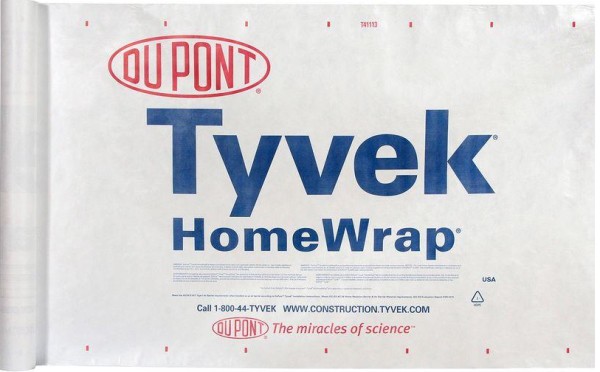
If you’ve done any research on tent camping, you’ve probably read about people putting tarps underneath of their tents. This is what is known as a tent footprint and it’s a common piece of gear that many campers and backpackers take advantage of.
But, do you need to put a tarp under your tent? Placing a tent under your tarp, otherwise known as a tent footprint, is important for people who intend on camping in the rain. It can also be useful for people looking to give their tent a bit of extra protection from rips, tears, punctures, and even condensation issues.
So how does a tent footprint help to protect against the rain, condensation, and tent damage? You’ll find out in the rest of this post!
Table of Contents
How Does a Tent Footprint Protect Your Tent
A tent footprint can help protect your tent in several ways.
For starters, it will help keep your tent dry when it rains. This is because the tarp you place under your tent will stand between your tent and the wet ground. As a result, your tent doesn’t absorb the groundwater and it ends up staying dry.
Tent footprints will also help protect your tent from condensation. Oftentimes, the combination of the heat of your body and the cold ground will create condensation. This is why campers will often wake up to a wet tent floor even though it didn’t rain. The tent footprint helps reduce the chances of this happening by creating an additional barrier between your warm body and the cold ground.
A tent footprint can also physically protect the bottom of your tent. It can serve as a barrier between your tent and the rocks, sticks, and other sharp objects that might be underneath it.
How Large Should Your Tent Footprint Be
A tent footprint should never be longer or wider than your tent. If the tent footprint is larger than your tent, you run the risk of rainwater pooling up on it and soaking through your tent.
Of course, a tent footprint shouldn’t be too small either. A tent footprint that is too small won’t provide adequate protection for the bottom of your tent and you could still end up with rainwater penetration underneath it.
Ideally, you’ll choose a tarp that is just a few inches smaller than your tent on all sides. This will keep the tarp safely away from falling rain while still protecting the great majority of your tent’s floor.
Tent Footprint Materials
Tent footprints can be made from a wide range of materials. You can buy professionally made tent footprints from a few select materials or you can make your own using a wide variety of different materials.
The most common tent footprint materials people use are:
- Nylon
- Polyethylene
- Polyester
- Canvas
- Vinyl
- Tyvek
- Plastic
Each material will have advantages and disadvantages associated with it so it’s important that you know what these advantages and disadvantages are. Let’s take a look at each tarp material in detail below.
Nylon
Nylon can be used to make lightweight tarps. Typically, it’s combined with silicon or polyester. These combinations help make the nylon more resistant to water and more durable.
A nylon tent footprint is good for backpackers because it’s lightweight and packs down tight.
The drawback to buying a nylon tent footprint is that it’ll most likely be more expensive than many of the other tent footprint options.
Polyethylene
Polyethylene is often used to make the cheap tarps that you’d find at Walmart or Harbor Freight. The primary advantage of these tarps is that they are inexpensive and easy to get.
These tarps may or may not be waterproof so you may want to consider spraying them with a water repellent.
Also, keep in mind that these tarps aren’t really designed for backpacking. You’ll find that they don’t fold up very well and that they don’t last very long. Luckily, they’re cheap enough that it really doesn’t matter if they don’t last more than one season.
Polyester
Polyester is a great material for making tent footprints and it’s what many professionally made ground covers are made of. This material is durable and naturally water-resistant. Add a water-repellent and it becomes a great tent footprint.
The major downside to this material is its price. A polyester tent footprint could easily cost you 10 times as much as a polyethylene tarp.
Canvas
Canvas has two main advantages over other types of tarps that you might put under your tent. The first advantage is that it’s more durable than most materials. A thick canvas tent footprint could easily last you a lifetime.
The other main advantage is that canvas is a natural material. This means it’s 100% renewable and sustainable so you don’t have to feel guilty about using it.
For these reasons, I really don’t consider canvas to be a viable tent footprint material. Unfortunately, a canvas tarp is heavy, it’s bulky, and it absorbs water. As a result, you won’t find many people using it as a tent footprint.
You can learn more about canvas tents on my post titled, “Canvas Tents Vs Nylon Tents“.
Vinyl
Vinyl is a thick and durable material that does a great job of protecting the bottom of a tent from punctures, rips, and tears. It’s also waterproof and it doesn’t collect mold and mildew very quickly.
Even though the above qualities would seem to make vinyl the perfect material to use as a tent footprint, the truth of the matter is that you’re probably better off going with a different tarp for under your tent. The reason for this is that vinyl has a few fatal flaws.
The first issue with vinyl is that it’s much heavier than the other materials we’ve talked about. It’s also thicker and harder to pack.
Even with these major issues, I still might consider using it for car camping if it weren’t for its final fatal flaw. This flaw would be its price.
Vinyl tarps are expensive. You could easily buy a professionally made polyester tent footprint as well as a bunch of polyethylene tarps for the price you’d pay for just one vinyl tarp.
Tyvek
Tyvek isn’t really a tarp at all. It’s the stuff you buy at your local Home Depot or Lowes to wrap the outside of your house with.
This material is cheap, it’s waterproof, and you can find it all over the place. Build a shed in your backyard and you’ll probably have some leftover Tyvek when you’re done.
Tyvek is usually bought by the roll but you can find people selling sheets of it online.

The advantage of this material is that it’s ultralight, waterproof, and inexpensive.
The drawback of Tyvek as a tent footprint is that it does not come with any grommets. Adding the grommets will cost you additional time and money.
This material isn’t the most durable either. Tyvek was made to stand between your home’s walls and its outer sheathing. Because of this, it just isn’t going to protect your tent from punctures as a thicker material would.
Plastic Sheeting
If you’re in a pinch, you could always grab a sheet of plastic to use underneath your tent. An example of this might be a plastic drop cloth for a larger tent or a heavy-duty compactor bag for a backpacking tent.
This material isn’t going to hold up very long but it isn’t going to cost you much either. It’s also extremely lightweight and easy to pack into a backpack.
As an added bonus, you could use the compactor bag to clean up your campsite before you leave.
Tarp Grommets
The downside to a lot of DIY tent footprints is the lack of tarp grommets. A grommet, (the rings that are placed into the holes of a tarp), will allow you to stake your tarp down without destroying the tarp. Professionally made tent footprints will usually have strong, yet lightweight grommets built into the tarp.
Alternatively, they may forgo tarp grommets, and instead, they’ll have straps that are sewn into the tent footprint. These straps make it easy to stake the tent footprint down. They also reduce the amount of water that flows in over the top of the footprint.
General tarps will usually have grommets of various strengths. Usually, the thicker the tarp, the stronger the grommet.
A simple way to add strength to a tarp’s grommet is to put tape over it. Just put gorilla tape or even duct tape on both sides of it. It isn’t the prettiest camping hack but it definitely works.
How to Choose a Tent Footprint
Choosing a tent footprint is simple. You just need to choose a size and a material.
The size will be dictated by the size of your tent. As we said earlier, you just want to aim to make it slightly smaller than your tent. This will protect your tent from groundwater, condensation, and sharp objects without allowing rainwater to pool up on it.
The material you choose will mostly be dictated by your budget and your particular needs. For example, if you need a lightweight backpacking tent footprint, you won’t be able to go with a thick vinyl tarp.
Instead, you’ll need to go with a lightweight material like a polyester tarp, a piece of Tyvek, or a sheet of plastic. People looking to save money can choose to go with the second and third options while people looking for something more robust will need to go with something more professional.
How to Use a Tent Footprint
Using a tent footprint is simple. Start out by choosing your campsite and clearing it of rocks, sticks, brush, and anything else that could harm your tent or put you at risk of fire.
Take a look at the bottom of this post: https://www.carandtent.com/are-tents-fire-resistant/ for more tips on that.
Once the ground has been prepared, lay your tarp down flat and stake it out on all four ends. After this, you’ll just need to erect your tent over the top of it, making sure that the tarp is completely covered by your tent.
Tent Footprint Maintenance
Different types of tent footprints will have different maintenance tasks associated with them. A piece of plastic or Tyvek isn’t going to require much work. You’ll just need to inspect it for holes and throw it out when you see any.
A more expensive tarp may need to be checked for rips, tears, and holes so that it can be patched. Additionally, you may need to occasionally add a water repellent to it.
Additional Tent Footprint Considerations
A large tarp can be folded up so that it can be used underneath a smaller tent. The key is to fold it underneath of itself so that water does not pool up.
Some tarps are only waterproof on one side. Place the waterproof side towards the ground.
Tarps are susceptible to damage from UV rays, (the sun). Keep your tent footprint out of the sun and it will last longer.
Tent footprint straps can be made to line up with the edges of your tent so that you can use your tent to stake them down. You’ll usually get this benefit from a tent footprint that was made specifically for your tent but you can also custom-design your own to have the same feature.
Summing It All Up
A tent footprint is a must-have item for tent campers. It provides protection for both you and your tent and can be as expensive or as inexpensive as you want it to be.

